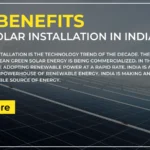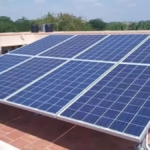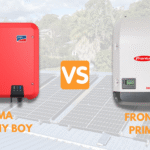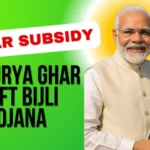India is moving fast toward clean and green energy. Solar power plays a big role in this change. To support people, the Indian government has launched several solar subsidy programs. These schemes aim to make solar energy more affordable for households and farmers.
In this article, we will explain the main solar subsidy programs available in 2025. You will also learn about eligibility, how to apply, and how much benefit you can receive.

1. PM Surya Ghar: Muft Bijli Yojana
This scheme was launched in February 2024. The goal is to install rooftop solar systems in one crore homes by March 2027. It mainly helps middle-class and lower-income families.
Main Benefits:
- Free Electricity: Eligible homes get up to 300 units of free electricity each month.
- Subsidy Amounts:
- ₹30,000 for 1 kW rooftop system
- ₹60,000 for 2 kW system
- ₹78,000 for 3 kW system (maximum limit)
- Loans: Collateral-free loans are available up to ₹2 lakh with around 7% interest for systems up to 3 kW.
- Support for Housing Societies: RWAs and group housing societies can get ₹18,000 per kW for common area solar systems, up to a 500 kW limit.
Who Can Apply:
- Indian citizens with a legal electricity connection.
- You must own a house with a suitable rooftop.
- You should not have received another solar subsidy earlier.
How to Apply:
- Go to the National Rooftop Solar Portal (pmsuryaghar.gov.in).
- Register using your state, electricity consumer number, mobile, and email.
- Apply for the rooftop solar installation.
- After feasibility check, get the system installed through an approved vendor.
- Submit installation proof and apply for a net meter.
- After inspection, a commissioning certificate is issued.
- Submit your bank details to get the subsidy, usually within 30 days.
Also Read DIY Install Solar Panel System in India
2. PM KUSUM Yojana
PM-KUSUM stands for “Pradhan Mantri Kisan Urja Suraksha evam Utthaan Mahabhiyan.” It is mainly for farmers and was launched in 2019. It helps farmers get solar pumps and small solar power plants.
Main Benefits:
- Subsidy: Farmers get up to 60% subsidy for solar pumps.
- Loan Facility: 30% of the cost can be taken as a loan. Farmers only need to pay 10%.
- Extra Income: Farmers can sell extra power to the grid.
- Eco-friendly: Reduces diesel use and supports clean farming.
Who Can Apply:
- Farmers with cultivable land.
- Must be willing to install solar panels or solar pumps.
How to Apply:
- Apply through your state’s renewable energy agency or electricity distribution company (DISCOM).
- You will need ID proof, land records, and bank details.
3. State-Level Solar Subsidies
Many Indian states are running their own solar subsidy programs. They often work with central schemes or offer extra benefits.
Gujarat:
- Gujarat leads the country in rooftop solar installations.
- Over 3.36 lakh homes have installed systems, generating more than 1,200 MW of solar power.
Andhra Pradesh:
- Aims to install 3 lakh rooftop solar systems by mid-2025.
- SC/ST families get 100% subsidy.
- BC households receive up to ₹80,000 subsidy.
Tripura:
- Offers solar systems to around 80,000 low-income families.
- Each household can get up to ₹19,800 per kW as subsidy.
If you live in a different state, check your local DISCOM or state energy department for specific details.
4. Benefits of Using Solar Power
Installing solar panels is not just about saving money. It has many other advantages:
- Lower Electricity Bills: Save thousands every month on electricity.
- Extra Income: You can earn by selling unused solar power to the electricity board.
- Low Maintenance: Solar systems last over 25 years with very little upkeep.
- Eco-Friendly: Helps reduce pollution and carbon emissions.
- Energy Independence: No need to worry about power cuts or rising electricity rates.
FAQs About Solar Subsidy in India
Q1. Can I get both central and state subsidies?
Usually, you can only claim one subsidy. You should check with your local DISCOM or state agency for exact rules.
Q2. What is net metering?
Net metering allows you to send extra solar electricity to the grid. Your bill will then be adjusted based on how much power you supply.
Q3. Are there tax benefits for installing solar panels?
Right now, there are no direct income tax benefits for home solar systems. But you save a lot through subsidies and lower bills.
Q4. How long does it take to get the subsidy money?
Once you submit the required documents and your system is verified, the subsidy is usually paid within 30 days.
Q5. Do I need a battery for my rooftop solar system?
Not necessarily. If you have a grid-connected system with net metering, you don’t need a battery. But if you want backup power during outages, a battery is useful.
Conclusion
India’s solar subsidy programs are a great way to go green and save money. Whether you are a homeowner or a farmer, there are schemes to support you. With rising electricity costs and government support, 2025 is the best time to go solar.
Check your eligibility, visit the national or state portals, and start your solar journey today!
Author- Ayush










